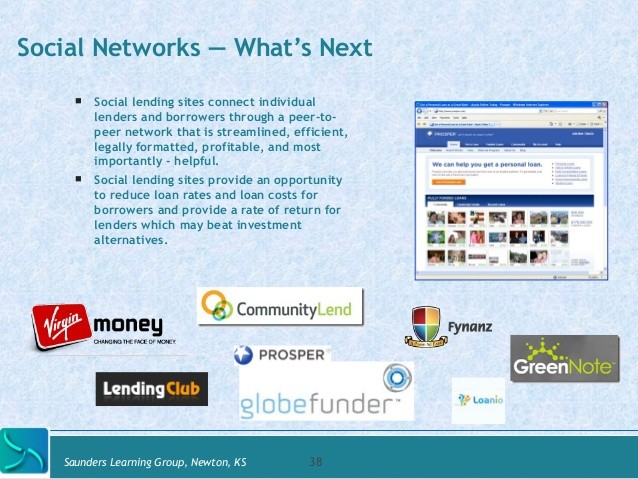Connecting borrowers and lenders Indians try peertopeer model
Post on: 26 Июнь, 2015 No Comment

Connecting borrowers and lenders: Indians try peer-to-peer model
Srinivas Porika tried for months to get a loan of 250,000 rupees ($4,000) to pay for his sister’s wedding, but every bank he tried turned him down. The problem: Porika’s employer, a tech start-up company, was not on the banks’ lists of pre-approved companies.
“They were ready to give me a credit card, but were not ready to give me a loan,” said the 28-year-old from Hyderabad, who met several bank managers and officials to plead his case.
The wedding went ahead in 2012, but only after Porika dipped into his savings and borrowed from friends. With an insufficient bonus at work and pressure mounting to pay off his debts this year, Porika turned to a peer-to-peer (P2P) lending website.
Entrepreneurs in India are now experimenting with the P2P business model, helping people like Porika, with websites such as i-lend.in and faircent.com providing a meeting ground for borrowers and lenders.
Such portals charge an upfront fee from both groups and get the borrowers documents and employment details verified by a third party. A contract with terms and conditions is signed within a week, with a recovery process in place for those who default on payments.
Lenders can choose from a list of verified borrowers on the website. They are also advised to spread their investment among borrowers to lessen the risk of default.
“Banks do not like to give personal loans below a certain quantum. They don’t say no outright, but they don’t take up the process,” said VVSSB Shankar, founder of i-lend.in, where people can borrow money at rates starting from 15 percent per annum .
“The primary challenge is the acceptability of this model. It’s very different from what the Indian consumer has seen over the years,” he said, adding that their business model does not fall under any existing regulations.
P2P lending is relatively new in India, but similar platforms such as Lending Club in the United States and Zopa in the United Kingdom have become popular in recent years. With over 40 platforms, peer-to-peer lending in the UK could be worth £1 billion ($1.64 billion) in loans per year by 2015, Research and Markets said in a report in September.
Personal loan rates in Indian banks can vary between 13.5 percent and 22 percent, with a minimum application amount of 50,000 rupees for some banks, according to data compiled by BankBazaar.com. With bad loans mounting, banks in India have become wary of lending in certain sectors in the past few years.
Customers can sometimes struggle to secure bank loans because of employer credentials, salary requirements or credit history. Around 3.8 trillion rupees ($61 billion) in personal loans, excluding home loans, were outstanding in March 2012, a Reserve Bank of India report showed. This includes education loans and credit card dues.
Informal lending is common in India, with businessmen and family members often lending money in times of need.
Shankar’s website went live in June last year and offers services to borrowers in Hyderabad for loans of 25,000 rupees to 100,000 rupees. It has helped in loan disbursal of around 1.2 million rupees ($19,200) so far.
Faircent.com, which began operating in October, adds another dimension to P2P lending by introducing community-based lending connecting borrowers and lenders from the same profession or community. Chief executive Rajat Gandhi said he hoped this would increase social pressure to repay loans.
“Typically which is the loan you pay back first the zero percent loan taken from your father-in-law it’s the proximity of this pressure which helps you in paying back faster,” said Gandhi.
Faircent, which aims to connect people from communities such as Agarwals or Jains. has received five lender registrations in one month with each pledging 100,000 rupees.
Though such P2P websites ensure documentation and verification, lenders do bear the risk of defaults. But that hasn’t deterred investors like Shivaram Vinjamuri, who has investments in everything from bank and postal deposits to stocks and mutual funds.
The 45-year-old freelance training consultant started by lending 25,000 rupees on i-lend at an interest rate of 15.25 percent, and now wants to increase his annual investment to 200,000 rupees.
“My 1.5 million rupees investment (in stocks) is only worth 325,000 rupees for me this (P2P) is not a risk,” Vinjamuri said. “The great advantage as an investor I found is that this could beat my inflation that was the icing on the cake.”
Angel investors and venture capitalists are also betting on this business model. After raising 7.5 million rupees from Singapore-based Angaros Capital, i-lend is in talks to raise 30 million rupees. California-based Norwest Venture Partners, which also invested in Lending Club, is evaluating the long-term potential of this model in the country, its India managing director Niren Shah said.

However, it may take a while for the P2P model to become more popular with legal complexities and higher risk of default among key concerns, said Kajal Gandhi, assistant vice-president of research at ICICI Direct.
IMPACT INVESTMENT
While the P2P loan market for individuals is relatively new, fund-raising platforms such as MicroGraam, Rang De and Milaap have been promoting social investments for years allowing people to lend to the poor while earning nominal returns.
Rangan Varadan started MicroGraam in 2010 after a 10-year stint at Infosys, India’s second largest IT services firm. With Infosys’ chief executive S. D. Shibulal among its investors, MicroGraam works closely with non-government organisations (NGOs) to help people living in India’s villages.
“Returns plus social impact, this is like impact investment category,” said Varadan. Of the loans facilitated by MicroGraam, around 17.5 million rupees are still outstanding. The Indian central bank had scrutinized the company in 2010 and financial statements are submitted annually, he added.
In MicroGraam’s model, lenders can earn returns of up to 6.5 percent while NGOs conducting due diligence on borrowers get around 6 percent. MicroGraam, which gets 1.5 percent on every loan disbursed, is helping people in states such as Tamil Nadu, Karnataka and Uttar Pradesh.
One such beneficiary is Savitri Devi, a resident of Deogarh district of Uttar Pradesh, who lost her family savings 12 years ago caring for her ailing husband. To earn a living, she started making and selling baris dried lentil dumplings used in cooking.
Devi used to earn 150 rupees per day, but now makes a profit of 1,200 rupees ($19) daily after expanding her business, partially because of the 20,000 rupees in two loans facilitated by MicroGraam.
“We feel very happy, our life is changed,” said Devi, who now employs five assistants. “We don’t want to go to the city; we want to expand here (in the village) and want to buy a machine”.
(Editing by Tony Tharakan and Robert MacMillan ; Follow Aditya on Twitter @adityayk. Tony @tonytharakan and Robert @bobbymacReports | Disclaimer: This article is website-exclusive and cannot be reproduced in any form without permission)














